Understanding Different Paints: Oil, Acrylic, Watercolor
Art has always been a vibrant expression of human creativity, and the choice of medium can dramatically influence the outcome of a piece. Among the plethora of options available, three paint types stand out: oil paints, acrylic paints, and watercolor paints. Each of these mediums carries its unique characteristics, advantages, and techniques that cater to different artistic styles and preferences. Understanding these differences is crucial for artists, whether you’re a novice picking up a brush for the first time or a seasoned professional looking to expand your repertoire.
Oil paints, known for their rich and deep colors, allow for a stunning level of detail and texture. Their slow drying time offers artists the luxury of blending colors seamlessly and layering without the rush. On the flip side, acrylic paints have gained immense popularity due to their versatility and rapid drying properties, making them ideal for those who prefer a quicker pace in their work. Watercolors, celebrated for their transparency and fluidity, invite artists to explore the delicate interplay of color and light, often resulting in ethereal and dreamy compositions.
In this article, we will dive deeper into each of these paint types, exploring their unique properties, applications, and techniques. By the end, you'll have a clearer understanding of which medium might best suit your creative projects, helping you unlock your artistic potential. So, let’s embark on this colorful journey and discover the world of paints together!
Oil paints are often hailed as the classic choice for artists, and for good reason. Their rich pigments and smooth application create a luxurious texture that many find irresistible. The slow drying time of oil paints—sometimes taking days or even weeks—allows for extensive blending and layering, giving artists the ability to create intricate details and subtle gradients. This characteristic makes oil paints particularly well-suited for techniques like glazing, where layers of transparent color are built up to achieve depth and luminosity.
However, with great power comes great responsibility! The extended drying time can also be a double-edged sword; it requires patience and planning. Artists must be mindful of their working time and how it affects their technique. Additionally, oil paints require specific solvents for thinning and cleaning, which can be a concern for those sensitive to chemicals.
Acrylic paints have become a favorite among modern artists due to their versatility and ease of use. Unlike oil paints, acrylics dry quickly, allowing artists to work at a faster pace. This quick drying time can be a blessing, especially when working on multiple layers or when time is of the essence. Acrylics can mimic the appearance of both oil and watercolor paints, depending on how they are diluted or applied, making them an incredibly flexible medium.
The development of acrylic paints in the mid-20th century revolutionized the art world, offering a new way for artists to express their creativity. Originally developed for commercial use, these paints quickly found their way into the hands of artists seeking a modern alternative to traditional oil and watercolor paints. Their ability to dry quickly and maintain vibrant colors made them a staple in contemporary art practices.
When it comes to drying times, understanding the differences between oil and acrylic paints is essential for artists. Here’s a quick comparison:
| Paint Type | Drying Time |
|---|---|
| Oil Paints | Days to weeks |
| Acrylic Paints | Minutes to hours |
This table illustrates how the drying times can significantly affect an artist's approach to their work. While oil paints allow for extended blending, acrylics require a more immediate response.
One of the exciting aspects of working with acrylics is the variety of mixing techniques available. Artists can experiment with different mediums, gels, and additives to create unique textures and effects. For instance, adding a retarder can slow down the drying time, allowing for more blending, while using a heavy body acrylic can create stunning impasto effects. The possibilities are endless!
Watercolor paints are a unique medium, celebrated for their transparency and fluidity. Unlike oil and acrylic, watercolors are typically applied in a wash, allowing for a delicate layering of colors that can create breathtaking effects. The beauty of watercolor lies in its unpredictability; the way colors blend and flow can lead to unexpected and delightful results. Artists often embrace this spontaneity, allowing the paint to dictate the direction of the artwork.
When it comes to selecting the right paint for your project, several factors come into play. The type of project you’re undertaking, your personal style, and even your budget can all influence your decision. Here are some considerations to keep in mind:
Different projects may require different paint types. For instance, if you're working on a detailed illustration, oil paints might provide the depth and richness you need. Conversely, if you're creating a large mural or a quick sketch, acrylics could be the way to go. Watercolors might be ideal for landscape paintings or delicate portraits where transparency is key.
Budget is another essential factor when selecting paints. Here’s a quick overview of the cost differences:
| Paint Type | Average Cost per Tube |
|---|---|
| Oil Paints | $10 - $50 |
| Acrylic Paints | $5 - $30 |
| Watercolor Paints | $5 - $40 |
As you can see, the cost can vary widely depending on the medium and quality of the paint. It’s essential to weigh your options and choose a paint that fits both your artistic needs and your budget.
- Can I mix oil and acrylic paints? Mixing oil and acrylic paints is generally not recommended due to their different drying times and properties.
- Which paint is best for beginners? Acrylics are often recommended for beginners due to their ease of use and quick drying time.
- Are watercolor paints permanent? Watercolors can be permanent if they are made with high-quality pigments and properly sealed.
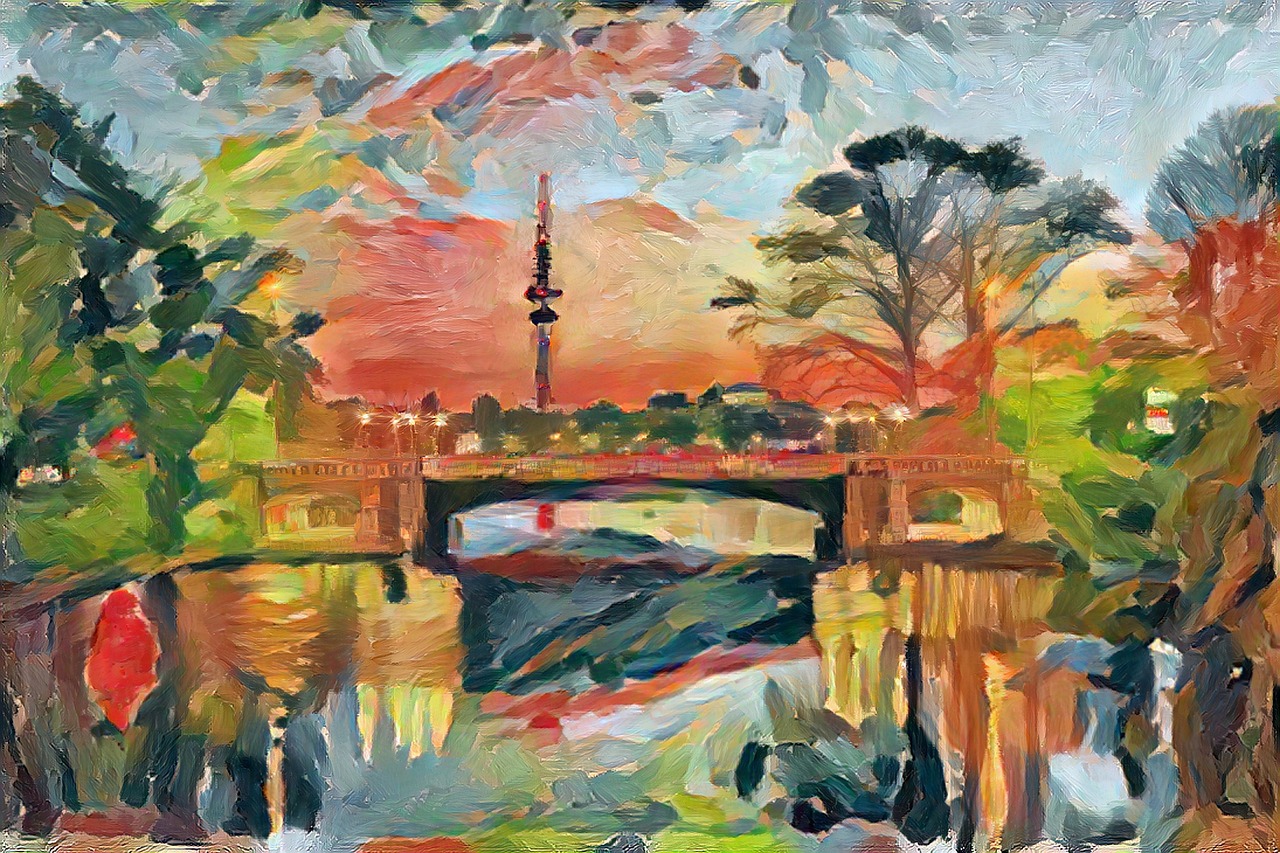
Oil Paints
When it comes to painting, are like the classic rock of the art world—timeless, rich, and full of depth. Known for their vibrant colors and unique texture, oil paints have been a favorite among artists for centuries. What sets them apart? For starters, their slow drying time allows artists to blend colors seamlessly and create stunning layers. Imagine being able to work on a piece over several days without the paint drying up on you—sounds like a dream, right?
One of the most appealing properties of oil paints is their versatility. They can be applied in various ways, from thick impasto techniques that create texture to thin glazes that offer a delicate transparency. This adaptability makes them suitable for a wide range of styles, from hyper-realistic portraits to abstract landscapes. However, this versatility comes with a learning curve. New artists may find the medium challenging at first, but with practice, the results can be breathtaking.
Another advantage of oil paints is their color richness. The pigments used in oil paints are often more vibrant than those in other mediums, giving artists a stunning palette to work with. The ability to layer colors also enhances the depth and luminosity of the artwork. Imagine painting a sunset where the colors seem to glow from within—this is the magic of oil paints!
However, it’s essential to consider some best practices when working with oil paints. Here are a few tips to keep in mind:
- Use quality brushes: Invest in good-quality brushes specifically designed for oil painting to achieve the best results.
- Work in layers: Start with an underpainting and gradually build up layers to create depth.
- Ventilation is key: Oil paints often contain solvents, so make sure to work in a well-ventilated area to avoid inhaling fumes.
In summary, oil paints offer a unique and rewarding experience for artists willing to embrace their complexities. They allow for a level of creativity and expression that few other mediums can match. Whether you’re a seasoned artist or just starting out, oil paints can open up a world of possibilities, inviting you to explore your artistic potential.
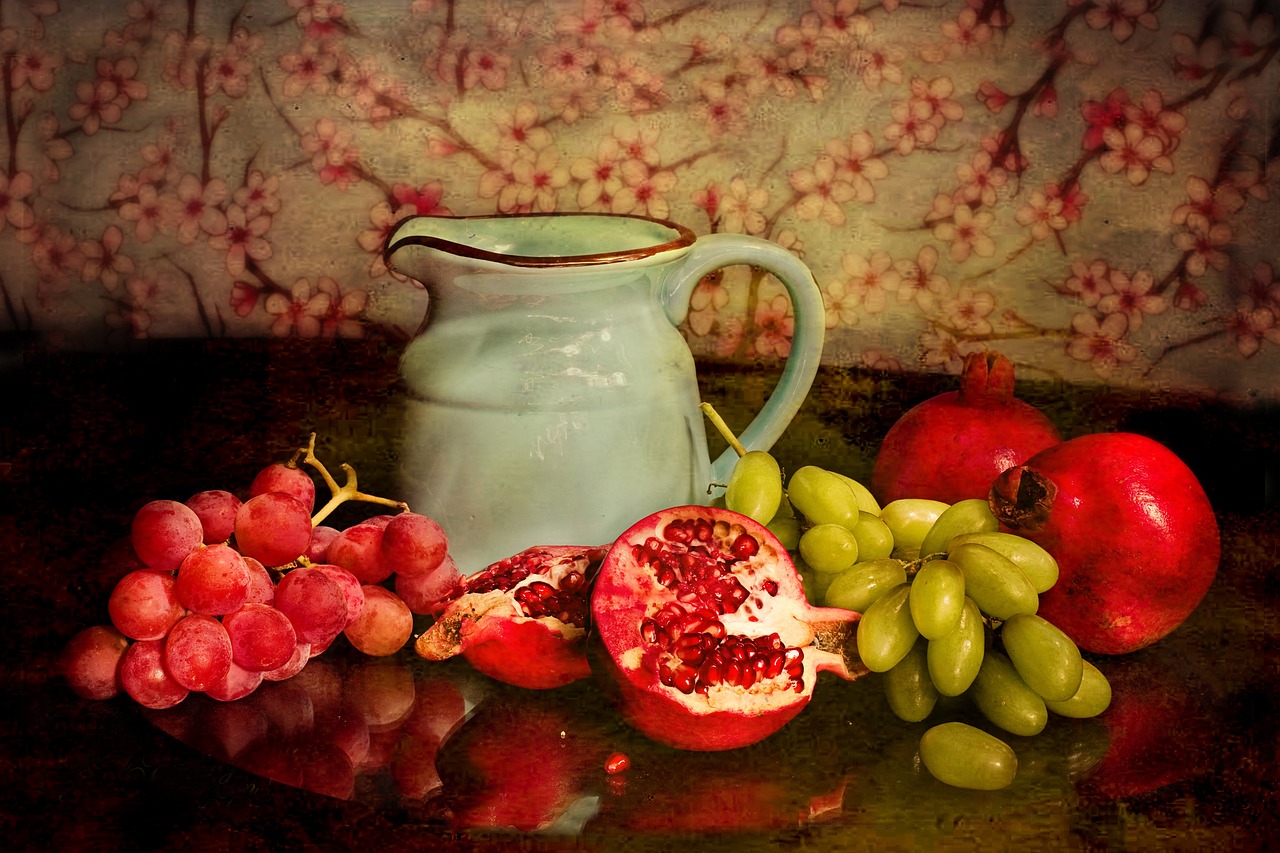
Acrylic Paints
Acrylic paints are like the chameleons of the art world—versatile, vibrant, and adaptable to various techniques. Unlike oil paints, which can be slow to dry and require a more patient approach, acrylics dry quickly, making them a favorite among artists who thrive on spontaneity. Imagine being able to layer colors without waiting hours for the previous layer to set! This quick-drying nature allows for a dynamic painting experience, enabling artists to work efficiently and experiment freely.
One of the most appealing aspects of acrylic paints is their versatility. They can be used on a variety of surfaces, including canvas, wood, paper, and even fabric. This flexibility opens up a world of creative possibilities. You can create anything from detailed illustrations to bold, abstract pieces. Plus, acrylics can mimic other mediums. Want the transparency of watercolors? Just add more water. Looking for the richness of oil paints? Use them straight from the tube! This adaptability makes acrylics a go-to choice for many contemporary artists.
Another significant advantage of acrylic paints is their ease of use. They are water-soluble when wet, which means cleanup is a breeze. No need for harsh solvents or complicated cleaning processes; a little soap and water will do the trick. This accessibility encourages budding artists to dive in without the intimidation factor that can sometimes accompany oil painting. Plus, they come in a wide array of colors, allowing for endless mixing and matching to achieve the perfect hue.
The story of acrylic paints is quite fascinating. Developed in the mid-20th century, these paints were a game changer for artists. Initially created for commercial applications, artists quickly recognized their potential for fine art. The first acrylic paints available to artists were heavily pigmented and offered a wide range of colors. Over the years, formulations have improved, leading to the high-quality acrylics we see today, which retain their vibrancy and durability over time.
When it comes to drying times, acrylic paints are in a league of their own. They typically dry within 15 to 30 minutes, depending on the thickness of the application and environmental conditions. In contrast, oil paints can take days to weeks to fully dry. This difference dramatically affects an artist's workflow. For instance, if you’re working on a piece that requires multiple layers, acrylics allow you to build up your painting quickly, while oil paints might require a more methodical approach. Understanding these differences can help you choose the right medium for your artistic style.
Acrylics also shine when it comes to mixing techniques. The ability to blend and layer colors in real-time opens up a plethora of creative avenues. Techniques such as wet-on-wet and dry brushing can create stunning textures and effects. For instance, wet-on-wet involves applying new paint onto wet paint, resulting in soft blends and gradients. On the other hand, dry brushing uses a dry brush to apply a small amount of paint, creating a scratchy, textured look. These methods can significantly enhance the depth and dimension of your artwork, making acrylics an exciting medium to explore.
In conclusion, acrylic paints are a fantastic choice for artists of all skill levels, offering a unique combination of versatility, quick drying times, and ease of use. Whether you're a seasoned painter or just starting, understanding the properties and techniques associated with acrylics can elevate your artistic endeavors.
- What are the best surfaces to use acrylic paints on? Acrylics can be used on various surfaces, including canvas, paper, wood, and fabric.
- How do I clean my brushes after using acrylic paints? Brushes can be cleaned easily with soap and water while the paint is still wet.
- Can I mix acrylic paints with other mediums? Yes, acrylics can be mixed with water, gels, and other acrylic mediums to alter their texture and finish.
- Are acrylic paints permanent? Once dry, acrylic paints are water-resistant and permanent, making them a durable choice for artworks.
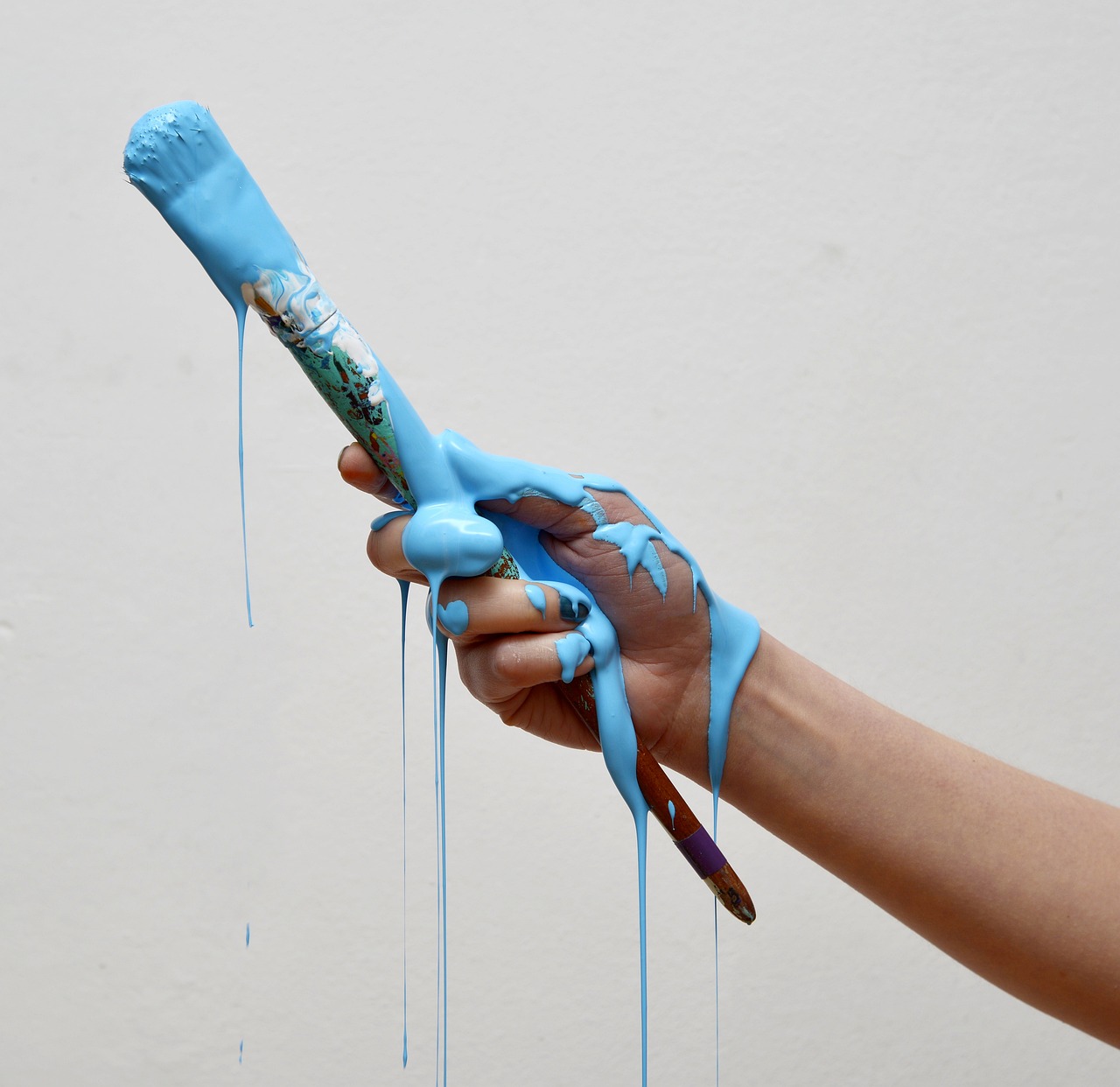
History of Acrylic Paints
Acrylic paints have a fascinating history that reflects the evolution of art materials and techniques over time. They emerged in the mid-20th century, marking a significant turning point for artists. The journey began in the 1930s when chemists experimented with synthetic resins and pigments, leading to the creation of the first acrylic emulsions. These early formulations were primarily intended for commercial applications, such as house paints. However, artists soon recognized their potential as a new medium.
By the 1950s, acrylic paints were officially introduced to the art world, thanks to brands like Liquitex, which marketed them as artist-grade materials. This was a game-changer! Artists like David Hockney and Andy Warhol embraced acrylics, utilizing their vibrant colors and quick-drying properties to produce groundbreaking works. The versatility of acrylics allowed for a range of techniques, from traditional brushwork to innovative pouring and spraying methods.
As acrylics gained popularity, they also underwent significant advancements. The formulation improved, leading to a wider variety of textures and finishes, including matte, gloss, and satin. Artists began to experiment with acrylic mediums, such as gels and pastes, which expanded the creative possibilities even further. Today, acrylic paints are a staple in contemporary art practices, favored for their adaptability and ease of use.
In summary, the history of acrylic paints is a testament to innovation in the art world. They transformed the way artists create, offering a modern alternative to traditional mediums like oil and watercolor. With their roots in commercial applications, acrylics have evolved into a beloved choice for artists of all backgrounds.

Comparing Drying Times
When it comes to painting, drying time can be a game-changer. Imagine you're in the middle of creating a masterpiece, and suddenly, the paint you’re using dries faster than you can blend those beautiful colors. Understanding the drying times of oil, acrylic, and watercolor paints is crucial for any artist looking to master their craft.
Oil paints are notorious for their slow drying time, which can range from several days to weeks depending on the thickness of the application and the environment. This slow pace allows artists the luxury of working with the paint for extended periods, enabling them to blend colors seamlessly and create stunning layers. However, this can also be a double-edged sword; while it offers flexibility, it can lead to a longer completion time for your artwork.
On the other hand, acrylic paints dry much faster, typically within 15 to 30 minutes. This quick drying time is one of the reasons why acrylics have gained immense popularity among modern artists. It allows for rapid layering and the ability to work on multiple projects simultaneously without worrying about smudging or disturbing previous layers. However, this speed can be a challenge for those who prefer to take their time with blending and detail work.
Watercolor paints fall somewhere in between. They dry relatively quickly, usually within a few minutes, but their transparency and fluidity mean that the artist can rework the paint with water even after it has dried. This unique characteristic allows watercolorists to play with the medium in a way that oil and acrylic artists cannot.
To give you a clearer picture, here’s a quick comparison of the drying times:
| Paint Type | Drying Time | Advantages |
|---|---|---|
| Oil Paints | Days to Weeks | Excellent for blending and layering |
| Acrylic Paints | 15 to 30 Minutes | Fast drying, allows for quick layering |
| Watercolor Paints | Minutes | Reworkable with water, great for transparency |
In summary, the choice of paint can significantly affect your workflow. While oil paints allow for extended manipulation and depth, acrylics cater to those who thrive on speed and efficiency. Watercolors, with their unique properties, offer a different kind of interaction that can lead to ethereal results. So, when deciding on your medium, consider not just the final look you want to achieve but also how you prefer to work.
Ultimately, understanding these drying times can help you plan your projects better, allowing you to maximize your creativity without the frustration of paint that dries too quickly or too slowly.
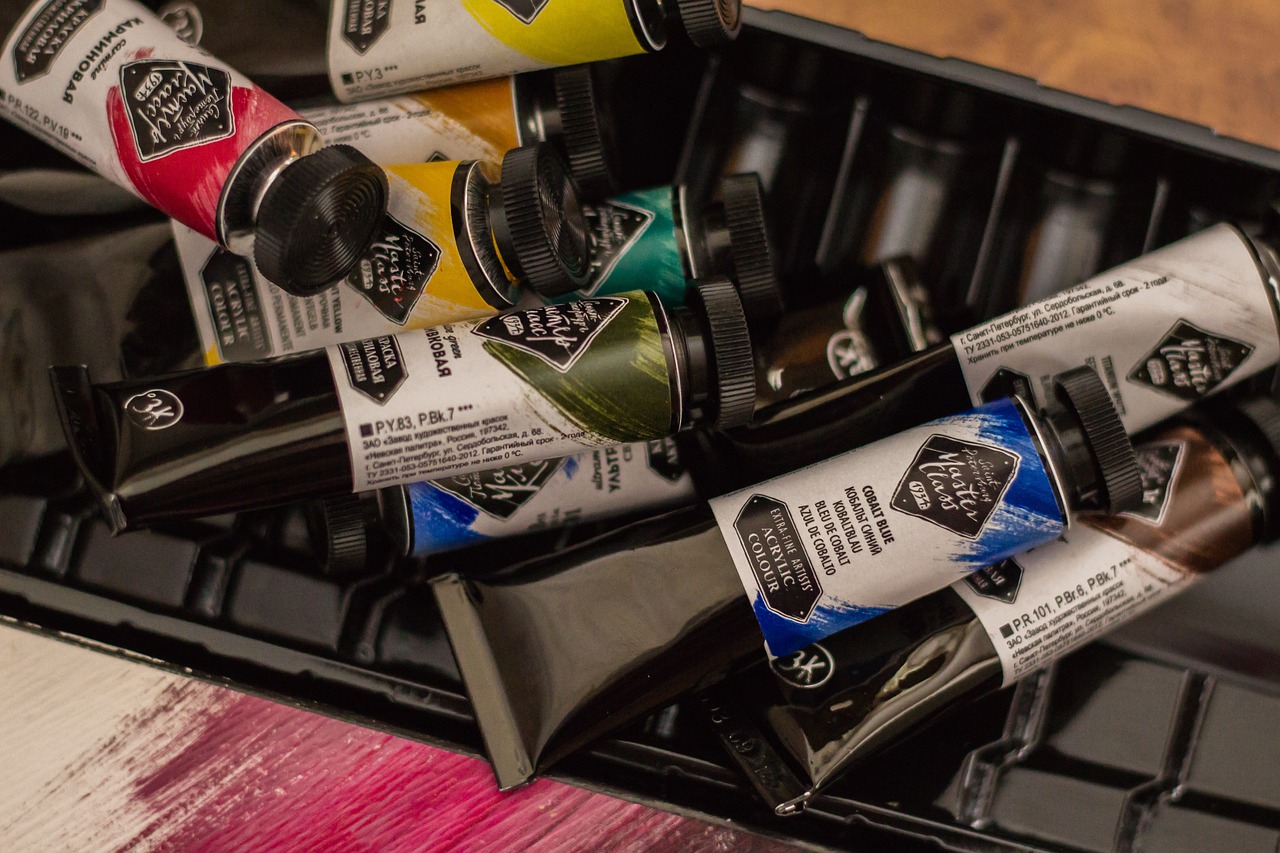
Mixing Techniques
When it comes to acrylic paints, one of the most exciting aspects is the myriad of you can employ to create stunning effects. Unlike oil paints, which require a longer drying time, acrylics dry quickly, allowing artists to experiment with blending colors in real-time. This rapid drying can be both a blessing and a challenge, but mastering it opens up a world of possibilities.
One popular technique is the wet-on-wet method, where you apply wet paint onto wet paint. This technique allows for beautiful gradients and soft edges, perfect for creating dreamy landscapes or ethereal portraits. Imagine painting a sunset where the colors seamlessly blend into one another, creating a breathtaking horizon. To achieve this, simply apply your base layer and then add your desired colors on top while they are still wet. The pigments will mingle together, producing a soft transition.
Another effective technique is dry brushing. This method involves using a dry brush with minimal paint to create textured effects. It’s fantastic for adding depth and highlights, especially in areas like hair or foliage. Picture a sunlit forest where the light dances through the leaves; dry brushing can mimic that play of light beautifully. To dry brush, dip your brush lightly into the paint, then wipe off most of it on a paper towel. You’ll be left with just enough pigment to create subtle textures.
Don't forget about glazing, an essential technique that can transform your artwork. Glazing involves applying a thin, transparent layer of paint over a dry layer. This can enhance color richness and add depth without obscuring the underlying details. Think of it as a filter for your painting, where each layer builds upon the last, creating a rich tapestry of color. To glaze, mix your acrylic paint with a glazing medium and apply it gently over your dried work. The result is a luminous effect that can make your colors pop.
Lastly, consider color mixing on your palette. While it might seem straightforward, the way colors interact can lead to unexpected and beautiful results. For instance, mixing complementary colors can create muted tones that are perfect for shadows or backgrounds. It’s like playing with fire; you can either create warmth or end up with something unexpected. Keep a color wheel handy to understand how different hues interact and to guide your mixing process.
In summary, mixing techniques with acrylic paints are not just about combining colors; they are about exploring the creative possibilities each method offers. Whether you’re blending, glazing, or dry brushing, each technique adds a unique flavor to your artwork. So grab your brushes, dive into your palette, and let your creativity flow!
- What is the best way to clean acrylic paint from brushes? - Use warm soapy water and rinse thoroughly. For stubborn paint, try a brush cleaner.
- Can you mix acrylic paint with water? - Yes, water can be used to thin acrylic paint, but too much can affect the paint's adhesion.
- How do I prevent acrylic paint from drying too fast? - Use a slow-drying medium or a palette with a lid to keep the paint moist longer.
- Is it possible to use acrylics on canvas paper? - Absolutely! Acrylics work well on a variety of surfaces, including canvas paper.
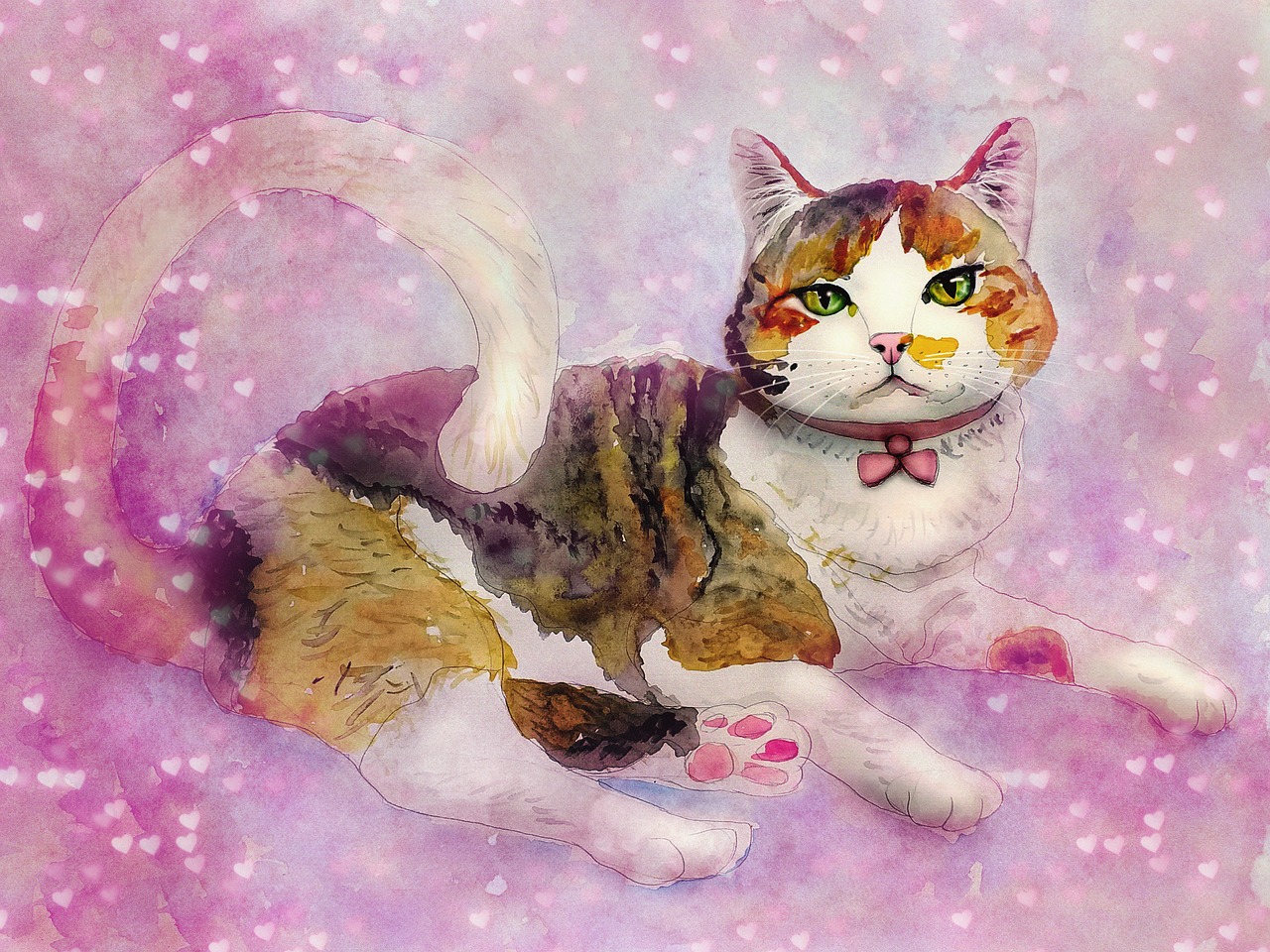
Watercolor Paints
Watercolor paints are often celebrated for their transparency and fluidity, allowing artists to create stunning effects that are difficult to achieve with other mediums. Unlike oil and acrylic paints, which tend to be more opaque, watercolors allow light to pass through the layers, giving a luminous quality to the artwork. This unique characteristic is what draws many artists to experiment with watercolors, as it opens up a world of possibilities for creating depth and texture.
One of the most fascinating aspects of watercolor is its ability to blend seamlessly on paper. When applied with a wet brush, colors can spread and merge, creating soft gradients that mimic the natural world. This fluidity can be both a blessing and a curse, as it requires a certain level of skill and understanding to control the paint. For beginners, it might feel daunting, but with practice, they can learn to harness this medium to produce breathtaking works of art.
Watercolors come in various forms, including tube and pan formats. Tube watercolors are often more vibrant and can be easily squeezed out for use, while pan watercolors are compact and portable, making them perfect for artists on the go. Regardless of the format, the choice between them often comes down to personal preference and the specific needs of a project.
When it comes to techniques, watercolor artists have a plethora of options at their disposal. Some popular techniques include:
- Wet-on-wet: Applying wet paint onto a wet surface, allowing colors to bleed into each other.
- Wet-on-dry: Applying wet paint onto a dry surface for sharper edges and more defined shapes.
- Glazing: Layering transparent washes to build depth and complexity in color.
- Salt technique: Sprinkling salt on wet paint to create unique textures as it dries.
In addition to these methods, understanding the paper used is crucial for achieving the best results. Watercolor paper is specially designed to absorb water and hold pigment without warping, and it comes in various weights and textures. The choice of paper can dramatically affect the final outcome of a piece, making it an essential consideration for any watercolor artist.
In summary, watercolor paints offer a unique combination of beauty and challenge. Their ability to create delicate washes and vibrant hues makes them a favorite among many artists. However, mastering this medium requires patience and a willingness to experiment. Whether you’re a seasoned professional or just starting out, the world of watercolor is waiting to be explored!
- What is the best paper for watercolor painting? The best paper for watercolor painting is typically 100% cotton, as it can absorb water without warping.
- Can I use regular paints for watercolor techniques? Regular paints are not recommended for watercolor techniques, as they do not have the same transparency and fluidity.
- How can I make my watercolors more vibrant? To make watercolors more vibrant, use less water when mixing and choose high-quality pigments.
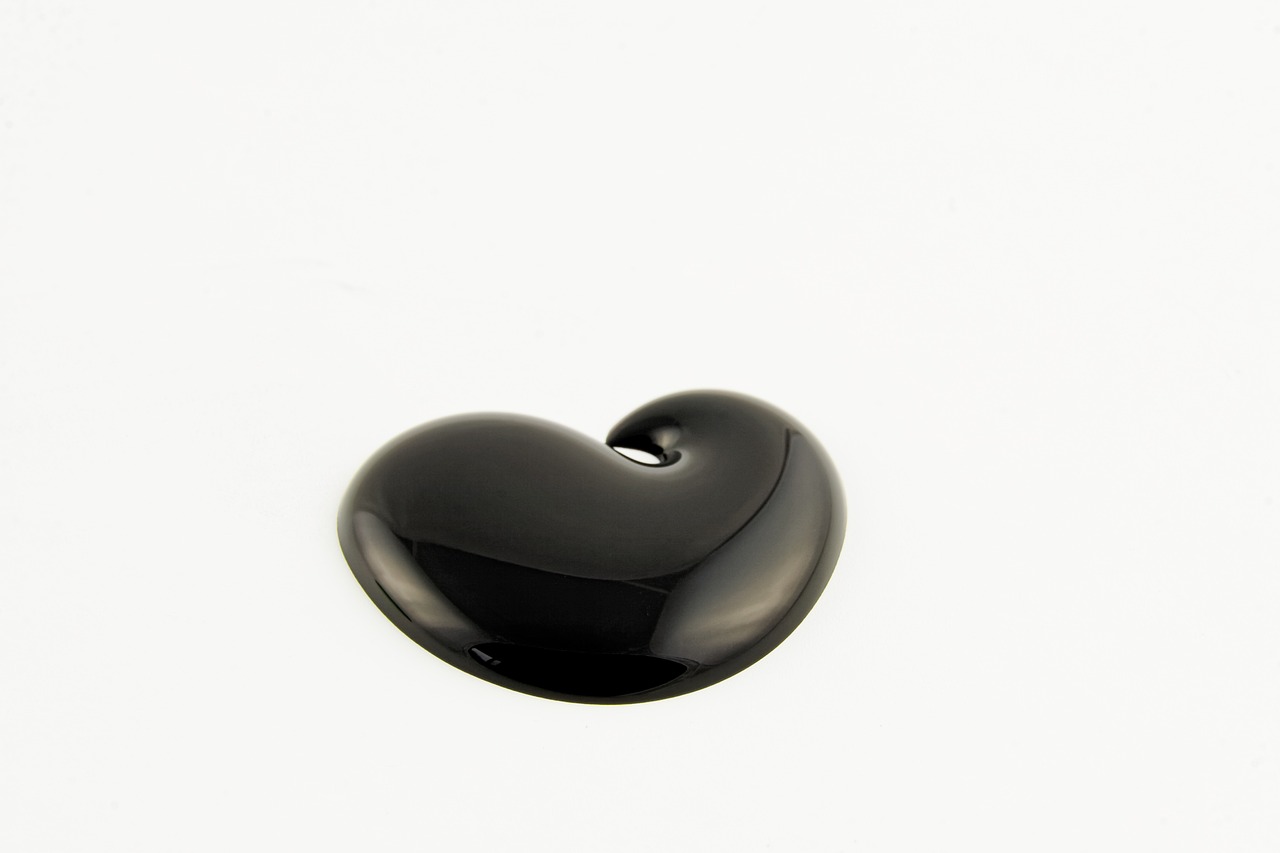
Choosing the Right Paint
When it comes to creating art, the choice of paint can be as crucial as the brush you use. Each medium—oil, acrylic, or watercolor—comes with its own set of characteristics that can significantly influence your creative process. So, how do you decide which paint is the best fit for your project? It all boils down to understanding the unique properties of each type and aligning them with your artistic vision.
First and foremost, consider the nature of your project. Are you looking to create a detailed portrait, a vibrant landscape, or perhaps an abstract piece? Each type of paint offers different advantages that can enhance your work. For example, oil paints are renowned for their rich, deep colors and ability to create smooth blends, making them ideal for detailed and layered work. On the other hand, acrylics dry quickly, enabling artists to work faster and layer colors without waiting for long periods. If you're leaning toward a more fluid and transparent approach, watercolor paints may be your best bet, as they allow for a unique blend of color and light.
Another essential factor to consider is the environment in which you'll be working. If you're working in a space that requires quick turnarounds—like a classroom or a community art center—acrylics might be your go-to choice. Their fast drying time can help you move from one layer to the next without interruption. Conversely, if you're in a more controlled environment where you have the luxury of time, oil paints can be a dream, allowing for stunning blending and textural effects.
Don't forget about your personal style and preferences. Every artist has a unique approach to their work. Some may prefer the buttery texture of oil paints, while others might enjoy the versatility of acrylics or the delicate washes of watercolors. Experimenting with different mediums can be enlightening; you might discover that a particular type of paint resonates with you more than others. Consider setting aside time to play with each medium, allowing your instincts to guide your choices.
Lastly, budget considerations can also play a role in your decision-making process. Generally, oil paints tend to be more expensive than acrylics or watercolors, especially when considering the cost of mediums and solvents required for their use. However, investing in quality materials can often lead to better results and a more enjoyable painting experience. Here’s a quick comparison of the average costs:
| Paint Type | Average Cost per Tube (Approx.) | Additional Supplies Needed |
|---|---|---|
| Oil Paint | $10 - $30 | Mediums, solvents, brushes |
| Acrylic Paint | $5 - $20 | Water, brushes |
| Watercolor Paint | $5 - $25 | Water, brushes, paper |
In summary, choosing the right paint is a multifaceted decision that involves considering your project needs, working environment, personal preferences, and budget. By taking the time to evaluate these factors, you'll be better equipped to select the perfect medium that aligns with your artistic goals. Remember, the journey of creating art is just as important as the final piece, so choose a paint that inspires you and enhances your creative expression.
- Can I mix different types of paint? Yes, but be cautious! Mixing oil with acrylics or watercolors can lead to unexpected results. It's best to stick to one medium for consistency.
- Which paint is best for beginners? Acrylics are often recommended for beginners due to their ease of use and quick drying time.
- How do I clean my brushes after using oil paints? Use a solvent like turpentine or mineral spirits to clean your brushes thoroughly.
- What paper should I use for watercolor painting? Look for watercolor paper that is specifically designed to handle the fluid nature of watercolors.

Project Suitability
When it comes to choosing the right paint for your artistic endeavors, understanding is crucial. Each paint type—oil, acrylic, and watercolor—offers unique characteristics that can either enhance or hinder your creative expression. So, how do you decide which medium is best for your project? Let’s break it down.
For instance, if you're working on a detailed illustration or a portrait, oil paints might be your best bet. Their slow drying time allows for meticulous layering and blending, giving you the ability to create depth and richness in your work. On the other hand, if you're looking to create something more spontaneous or abstract, acrylic paints could be the way to go. Their quick drying time lets you work rapidly, making it easier to experiment with different techniques without the hassle of waiting for layers to dry.
Watercolor paints, known for their transparency and fluidity, are perfect for projects that require a light touch and subtlety. They excel in creating soft washes and delicate details, making them ideal for landscapes or nature studies. However, they can be less forgiving than oils or acrylics, so it’s essential to consider your skill level and the desired outcome of your artwork.
To help clarify the suitability of each paint type for various projects, here’s a quick comparison:
| Project Type | Best Paint Type | Why? |
|---|---|---|
| Detailed Illustrations | Oil Paints | Allows for blending and layering over extended periods. |
| Abstract Art | Acrylic Paints | Quick drying, perfect for spontaneous creativity. |
| Landscapes | Watercolor Paints | Excellent for soft washes and light effects. |
| Large Canvases | Acrylic Paints | Versatile and easy to apply in large areas. |
| Fine Art Techniques | Oil Paints | Great for detailed textures and rich colors. |
Ultimately, the choice of paint should align with your artistic goals and the specific requirements of your project. Consider factors such as the desired texture, color vibrancy, and application technique. Remember, the right paint can elevate your artwork from good to extraordinary, so take the time to choose wisely!
Q: Can I mix different types of paint?
A: While mixing different paint types can create unique effects, it's generally not recommended as they may not adhere well or produce the desired results. Stick to one type for best outcomes.
Q: What is the best paint for beginners?
A: Acrylic paints are often recommended for beginners due to their versatility, ease of use, and quick drying time.
Q: How do I know which paint is best for my project?
A: Consider the project type, your skill level, and the desired effects. Each paint type has its strengths and weaknesses that can affect your final outcome.

Cost Considerations
When it comes to selecting the right paint for your artistic endeavors, cost is a crucial factor that can greatly influence your decision. Each type of paint—oil, acrylic, and watercolor—comes with its own price range, which can vary based on quality, brand, and even location. Understanding these differences can help you make informed choices that align with your budget while still allowing you to create stunning artwork.
Generally speaking, oil paints tend to be the most expensive of the three options. This is largely due to the high-quality pigments and the oil medium used, which can drive up production costs. For artists looking to invest in rich, vibrant colors, this could be worth the expense. However, it’s important to note that oil paints also require additional materials such as solvents and mediums, which can further increase costs. Here’s a simple breakdown:
| Paint Type | Average Cost per Tube (60ml) | Additional Supplies Needed |
|---|---|---|
| Oil Paint | $10 - $50 | Solvents, mediums, brushes |
| Acrylic Paint | $5 - $30 | Water, brushes, gels |
| Watercolor Paint | $5 - $40 | Water, brushes, paper |
Acrylic paints, on the other hand, offer a more budget-friendly option for many artists. With prices typically ranging from $5 to $30 per tube, they provide a great balance of quality and affordability. The quick-drying nature of acrylics also means that artists can work faster, potentially reducing the time spent on a project, which can translate to cost savings. Plus, the only additional supplies needed are water and brushes, making them a straightforward choice for beginners.
Watercolor paints are similarly priced to acrylics, with tubes ranging from $5 to $40. However, the cost can vary significantly based on the brand and quality of the pigments. Watercolors often require specialized paper and brushes, which can add to the overall expense. But for artists who love the fluidity and transparency of watercolors, the investment can be well worth it.
Ultimately, when considering costs, it's essential to look beyond just the price of the paint. Think about the overall expenses involved in your projects, including the necessary tools and materials. This holistic view will help you determine the most suitable medium for your artistic practice without breaking the bank.
- What is the most affordable paint type? Acrylic paints are generally the most budget-friendly option.
- Do I need additional supplies for oil paints? Yes, oil paints require solvents and mediums, which can increase costs.
- Are expensive paints worth the investment? Higher-quality paints often provide better pigmentation and durability, making them a worthwhile investment for serious artists.
- Can I use regular paper for watercolor paints? It's best to use watercolor paper to achieve the desired effects without warping.
Frequently Asked Questions
- What are the main differences between oil, acrylic, and watercolor paints?
Oil paints are known for their rich texture and slow drying time, which allows for detailed blending. Acrylics dry quickly and are versatile, making them great for layering and mixed media. Watercolors are transparent and fluid, ideal for creating soft washes and delicate details.
- Which paint is best for beginners?
Acrylic paints are often recommended for beginners due to their ease of use, quick drying times, and water-based nature, which makes cleanup a breeze. They can be used on various surfaces and allow for experimentation without the long wait times associated with oils.
- How do I choose the right paint for my project?
Consider the project's requirements: if you need detailed blending and depth, oil paints might be your best bet. For quick projects or mixed media, acrylics shine. If you're aiming for a light, airy feel, go for watercolors. Think about the final effect you want to achieve!
- What are the drying times for these paints?
Oil paints can take days to weeks to fully dry, while acrylics can dry within minutes to hours, depending on thickness. Watercolors dry quickly, but you can also rework them with water for a while. Knowing these times helps in planning your painting sessions effectively!
- Can I mix different types of paint?
Mixing oil and acrylic paints is generally not recommended as they have different bases and drying times, leading to potential issues. However, you can mix different brands of acrylics or blend watercolors with each other for unique effects!
- Are there specific techniques for using acrylic paints?
Absolutely! Acrylics lend themselves to a variety of techniques like glazing, pouring, and dry brushing. You can also use mediums to change their texture and finish. Experimenting with these methods can enhance your artwork significantly!
- What is the cost difference between these paints?
Generally, oil paints tend to be more expensive due to their pigments and oil base. Acrylics can range from budget-friendly to premium, while watercolors vary widely based on quality. It's crucial to factor in your budget, but remember, investing in quality can elevate your art!



















